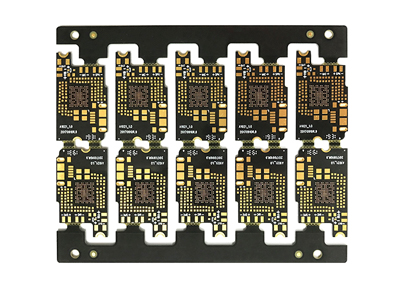Exploring the possibilities of multilayer PCB design opens up a world of opportunities for creating advanced electronic systems. Here are some key possibilities and benefits:

High Circuit Density: Multilayer PCBs allow for increased circuit density by accommodating a larger number of components and traces within a compact space. This enables the design of complex electronic systems with enhanced functionality.
Mixed-Signal Integration: Multilayer PCBs offer the flexibility to integrate analog, digital, and RF (Radio Frequency) components on separate layers. This allows for the design of mixed-signal systems, enabling efficient signal processing and communication between different circuit domains.
High-Speed Design: With multilayer PCBs, it is possible to implement controlled impedance routing and reduce signal distortion and loss. This makes them suitable for high-speed applications, such as data communication, video processing, and high-frequency signal transmission.
Power Integrity and Distribution: Multilayer PCBs provide dedicated power and ground planes, allowing for efficient power distribution and reducing the effects of noise and voltage drops. This ensures stable power delivery to the components and minimizes the risk of power-related issues.
Signal Integrity and EMI Control: By separating signal layers from power and ground planes, multilayer PCBs can minimize crosstalk, noise, and electromagnetic interference (EMI). This results in improved signal integrity, reduced EMI emissions, and compliance with electromagnetic compatibility (EMC) standards.
Thermal Management: Multilayer PCBs offer better thermal management capabilities. Internal copper planes can be used as heat sinks or for heat dissipation, helping to dissipate heat generated by components. This improves the reliability and longevity of the electronic system.
Design Flexibility: Multilayer PCBs provide greater design flexibility due to the availability of multiple routing layers. This allows for complex and compact designs, incorporation of high-speed interfaces, differential pairs, and efficient use of board space.
Miniaturization: Multilayer PCBs enable miniaturization of electronic devices by reducing the overall size and weight. This is particularly advantageous for portable devices, wearables, and space-constrained applications.
Improved Reliability: Multilayer PCBs offer enhanced structural integrity, making them more resistant to mechanical stress, vibration, and thermal expansion. This improves the overall reliability and robustness of the electronic system.
Advanced Applications: Multilayer PCBs are essential for various advanced applications such as aerospace, automotive, medical devices, telecommunications, industrial control systems, and IoT devices. They provide the necessary capabilities to meet the requirements of these demanding applications.
Exploring the possibilities of multilayer PCB design allows engineers to push the boundaries of electronic system development, enabling the creation of innovative and high-performance products for a wide range of industries.
Get more knowledge about Multilayer PCB Design please refer to Rigaopcb:https://www.rigaopcb.com/